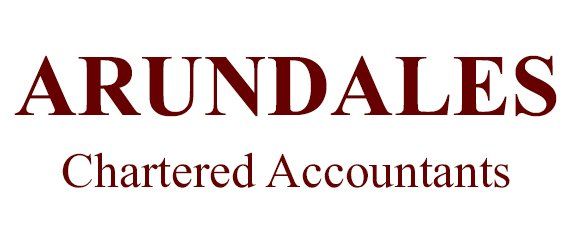PROTECTINGJOBS
The second phases of the Coronavirus Job Retention Scheme and the Self-employment Income Support Scheme will continue to provide support to businesses and employees. Business owners need to claim for these schemes and we summarise the main points here.
Coronavirus Job Retention Scheme (CJRS) Phase 2
The CJRS was released in the first wave of the package of measures designed to help protect jobs and prevent redundancies at the start of the pandemic. Phase 1 of the scheme ran from 1 March to 30 June 2020 with employers having until 31 July 2020 to make the claims for the period to 30 June 2020.
On 1 July 2020 phase 2 commenced. Under the Flexible Furlough Scheme, for claim periods starting after 1 July 2020 employers can bring furloughed employees back to work for any amount of time or on any shift pattern, while still being able to claim the government grant to cover the cost for the hours not worked.
From 1 July 2020, only employees previously furloughed are eligible under the revised flexible scheme and the rules change slightly each month until the scheme closes on 31 October 2020, making it no longer possible for claim periods to overlap calendar months. Claims can only be made for a period of at least seven days, except where the period includes the first or last day of the month where a claim has already been made for the period ending immediately before. Only one claim can be made for any period
and all furloughed and flexibly furloughed employees must be included in the one claim (even if they are paid at different times).
If the employee is fully furloughed they must not work for the employer during the claim period but the claim is still calculated using the ‘maximum wage amount’ of £2,500 per month or £576.92 per week. However this is not what can necessarily be claimed in the grant. In July and August the government will contribute 80% of the employee’s wage up to £2,500 with a contribution in July only for the employer NICs and pension contributions. From August onwards the employer NICs and pension contributions become the employer’s responsibility.
In September the government grant falls to 70% of the wages up to £2,187.50 with the employer being required to contribute 10% of the wages up to £312.50 and the government grant falls again in October to 60% of the wage up to £1,875 with the employer being required to contribute 20% up to £625.
Flexible furlough
It is when an employee is flexibly furloughed that the Government grant calculation requires that the ‘usual’ hours and the ‘furloughed’ hours are calculated. This is because the grant can still be claimed for the hours the employee does not work compared to the hours they would usually have worked in that period. The ‘usual’ hours are dependent on whether the employee is on a ‘fixed’ hours rate or a ‘variable’ hours rate contract.
The term ‘variable’ hours is used to describe an employee who is not contracted for a fixed number of hours or whose pay depends on the hours worked and a ‘fixed’ hours employee is an employee where neither of these conditions apply.
The calculation of the amount of the CJRS grant for those on flexible furlough will be based on the report of the ‘usual’ hours worked for an employee on a ‘fixed’ hour contract and on the higher of the ‘usual’ wage earned for the corresponding calendar period in 2019/20 and the average wages payable in 2019/20 for a variable hour contract.
Other points
Payments received by a business under the scheme must be included as income in the business’s calculation of its taxable profits. Businesses can deduct employment costs as normal when calculating taxable profits.
Individuals with employees that are not employed as part of a business (such as nannies or other domestic staff) are not taxable on grants received under the scheme. Domestic staff are subject to Income Tax and National Insurance Contributions on their wages as normal.
There are special rules for those returning to work following periods of parental leave or being re-hired after being made redundant and employers must ensure the requirements of the National Living and National Minimum Wage are not breached.
HMRC will include legislation in the Finance Bill 2020 to allow for the clawback of any amounts of the CJRS grant which were not due with the potential for a penalty charge for failure to notify or the deliberate concealment of an error.
Comment
The calculations are onerous and we will be happy to help you with any problems or enquiries.
Self-employment Income Support Scheme (SEISS)
To support the self-employed through the pandemic, the government introduced the SEISS. It is a taxable government grant at a rate of 80% of average monthly trading profits. The claims service launched on 13 May 2020 and the grant is paid out in a single payment covering three months, capped at £7,500.
The grant has been extended for a further three months with the final payment being available to claim from 17 August 2020. The second payment of 70% of average monthly trading profits for three months will be subject to a cap of £6,570. Claimants do not need to have claimed the first grant in order to claim the second but claims for the first grant must be made by 13 July and claims for the final grant must be made by 19 October 2020.
The eligibility criteria are the same for both grants, but individuals will need to confirm that their business has been adversely affected by coronavirus when applying for the final grant.
If an individual receives the grant they can continue to work, start a new trade or take on other employment including voluntary work. The grant will be subject to income tax and national insurance, but it is not a taxable supply for VAT purposes. The grant amount will be paid directly into a bank account, in one instalment.
When calculating the amount of grant, HMRC will use the figures on tax returns for total trading income (turnover), then deduct any allowable business expenses and capital expenditure. This includes any business expenses deducted through the trading allowance and capital allowances but will not include any losses brought forward.
As with the first grant an individual can claim if they are a self-employed individual or a member of a partnership and:
- carry on a trade which has been adversely affected by coronavirus
- trading profits for the years used in the calculation must average no more than £50,000 and be at least equal to non-trading income in the year
- traded in 2018/19 and submitted their self-assessment tax return on or before 23 April 2020
- traded in 2019/20, and
- intend to continue to trade in 2020/21.
HMRC will use data on the tax returns already submitted to identify those eligible to claim.
Comment
As accountants we cannot apply for SEISS grants on your behalf, but we can request a review if the result of HMRC’s systems returns
As accountants we cannot apply for SEISS grants on your behalf, but we can request a review if the result of HMRC’s systems returns
a ‘not eligible’ outcome with which you disagree. Please contact us if you have any concerns or require our help.
Support for cultural, arts and heritage institutions
In a joint press release issued two days before the Economic Update, HM Treasury and the Department for Digital, Culture, Media & Sport announced a number of support measures.
The package includes:
- £1.15 billion support pot for cultural organisations in England delivered through a mix of grants and loans. This will be made up of £270 million of repayable finance and £880 million grants
- £100 million of support for the national cultural institutions in England and the English Heritage Trust
- £120 million capital investment to restart construction on cultural infrastructure and for heritage construction projects in England which were paused due to the coronavirus pandemic.
The new funding will also mean an extra £188 million for the devolved administrations in Northern Ireland (£33 million), Scotland (£97 million) and Wales (£59 million).
Decisions on awards will be made working alongside independent figures from the sector including the Arts Council England and other specialist bodies such as Historic England, National Lottery Heritage Fund and the British Film Institute.
Comment
Details on the repayable finance aspects of the package will be available when the scheme opens for applications in the coming weeks.



